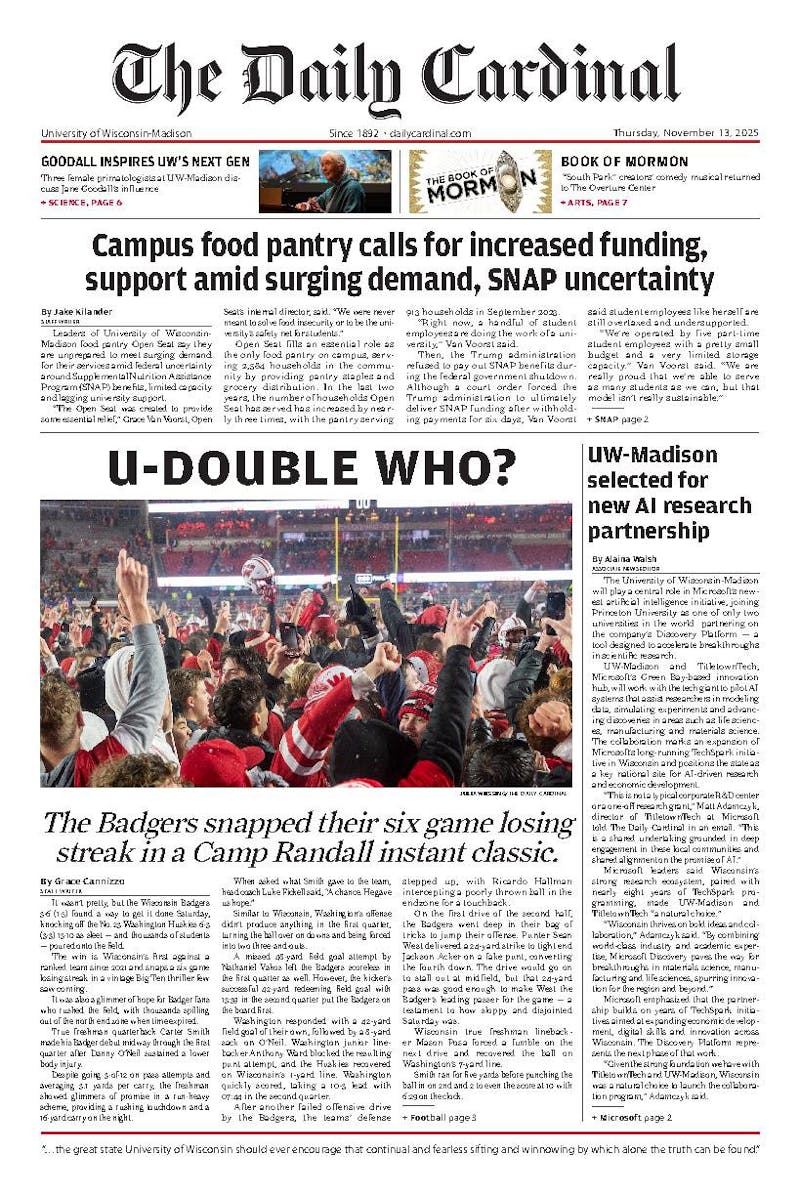It is said that a black panther is able to hunt and kill animals up to 15 times its weight. Conversely, an animal found on the other side of the globe, the timid badger, does not usually seek to attack, but its great muscular power and tough hide render it a formidable opponent.
Faced with these facts, the UW-Milwaukee Panthers should make veritable colleagues for the UW-Madison Badgers in the future, as UW-Milwaukee grows into Wisconsin's second major research university. The universities' chancellors and state representatives concur.
In his spring semester address, UWM Chancellor Carlos Santiago proposed rendering UW-Milwaukee an advanced research institution by adding two additional campuses, a plan that would entail a total budget of $300 million. The plan calls for about $100 million to be state-funded.
The plan would focus on three basic areas of research: biomedical engineering, advanced automation, and health care and health sciences. To accommodate the research programs, UWM would build two satellite campuses in the metropolitan area where students and future graduates would be able to collaborate with nearby businesses.
The question now is: Is there room for collaboration between the schools, and can Wisconsin afford another research institution?
The responses from Santiago and UW-Madison Chancellor John Wiley imply future partnership between the usually rivalrous Panthers and Badgers.
""It's helpful to have more research capacity and research activity nearby and in the state,"" Wiley said. ""Research tends to be a synergistic activity. To the extent that they're successful at building up their research programs, it will probably help ours as well.""
Gov. Jim Doyle and other state lawmakers have also expressed support for Santiago's plans to add another research university to the UW System.
""The university has the potential to be a great vehicle for economic growth in Milwaukee,"" said state Sen. Lena Taylor, D-Milwaukee. ""UWM must continue to adapt and grow to meet the needs of its students and the community.""
Wisconsin taxpayers and students may wonder how the state will fund the $100 million needed for the UWM expansion.
The UWM Foundation, a non-profit corporation Santiago described as the ""repository of the funds that we raise philanthropically,"" has requested the funding be involved in the governor's General Purpose Revenue budget as part of the UW System's Growth Agenda.
""If the total budget doesn't grow, then the money would have to come from some place,"" said state Rep. Spencer Black, D-Madison. ""My concern would be if it would come from other university programs.""
According to UW System Board of Regents President David Walsh, the Board supports the money for research processes at UWM but does not expect to get the full $100 million through state funds.
""There will not be a direct impact on tuition, there might be a cumulative effect,"" Walsh said. ""We won't know that until we see the budget.""
Doyle will announce Wisconsin's 2007-'09 biennial budget Feb. 13.
According to Wiley, the sources for funding the expansion ""will be a combination, just like it has been for us.""
The funds raised so far in the campaign stand at $65 million, with $17 million of the targeted $25 million designated for scholarships.
Beyond issues of funding, Panthers on campus already have little space to stretch their paws. UW-Milwaukee currently serves more than 28,000 students on 93 acres, averaging about 301 students per acre.
""They're a little more than half of the size of Madison, but they're in a very tiny footprint, right in a very heavily built-up part of the city,"" Wiley said of UWM's tight location.
According to Wiley, if UWM is going to be able to handle more students in the future, it needs to have some satellite campuses in the Greater Metropolitan area.
One proposed campus would be located near the Milwaukee Regional Medical Center and Milwaukee County Research Park in Wauwatosa, Wis.
The other would be built near a hospital or other health-care provider in downtown Milwaukee. Santiago said the plans would help ""decompress the existing campus.""
During the 2005-'07 budget biennium, Doyle suggested UWM expand educational facilities in Waukesha County, with the idea of merging the UW-Milwaukee and UW-Waukesha campuses.
In addition, the report suggested the chancellors discuss options for UWM to establish a research center on the UW-Waukesha campus. Plans have yet to progress on merging the two campuses.
""The more things we can do to make our system behave like and perform like an integrated system, the better off we are,"" Wiley said regarding the entire University of Wisconsin higher education system. ""We're not just a loose collection of 13 separate campuses, we're part of one single system.""
Based on current support, fundraising, collaboration with local businesses and the possibility of state funding, the panther and the badger may very well meet head-to-head on the research field sometime soon.
""We hope to see facilities up and running by six years,"" Santiago said.





